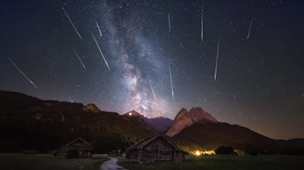Its June and school is nearly out. The summer holidays are fast approaching and whether you are planning a holiday home or abroad there will so many interesting objects to observe in the June Night sky; let’s just hope the weather is kind to us and offers good clear skies for stargazing and planet spotting. Although you might have to have a bit more patience as the days in June are much longer and flooded with daylight. The best time to go observing is around 11pm and preferably at the beginning or end of this month when the moon is not at full phase, meaning less moonlight obscuring your view.

Jupiter is visible for most of the year and very easily identified by it shining brilliance, but on June 10th Jupiter will be brighter than at any other time of the year and definitely not sight to be missed. At this time Jupiter is in opposition (which is the technical term for Jupiter being opposite to the sun) and at the same time Jupiter is also at its closest approach to Earth. The Jovian planet is found in the constellation of Ophiuchus the Serpent bearer and will be visible from approximately 10pm rising in a South Eastern direction and at its highest from at 1am and observable to 3.45am. This is the perfect time to see the true wonder of Jupiter as through a small telescope it is possible to see the four Galilean Moons (Io, Calisto, Ganymede and Europa); they will appear as small bright dots. Other features include the Great Red Spot which is a large storm that is raging on the surface of Jupiter and has been observed for at least four hundred years.

Looking to the Constellations, Ophiuchus the Serpent bearer is mostly clearly seen in June and through into July. This constellation and is made up of 15 stars and passes through the elliptic which is the path the sun follows and the same band that the signs of the Zodiac lie within. Ophiuchus has not been included within the zodiacal family but is often referred to as the 13th sign of the Zodiac. In Greek Mythology Ophiuchus represents the God of Medicine, Asclepius, who discovered from a snake the healing powers from plants. On one occasion Ophiuchus healed the great hunter Orion who had been stung by the Scorpius the scorpion. This outraged Hades the God of the Underworld because he thought that he’d lose his power to cause death, so Hades had his brother Zeus the King of the Gods to kill Asclepius, but placed him in heavens to honour his good intentions.

Another constellation that we can see this June is Hercules and personally I think this pattern somewhat resembles a squashed spider. To find Hercules look for the area called the Keystone asterism that contains a four-star trapezium shape, which looks a little like a flower pot. In Greek mythology Hercules was the was the half mortal son of Zeus the King of the Gods. Zeus’ wife Hera didn’t care much for Hercules and very often tried to cause him harm. On one occasion she caused him to lose his mind and he killed his family. To repent, Hercules took on 12 near impossible tasks, he displayed superhuman strengths and after completing the 12 Labours Hercules was rewarded by being made immoral.

Within Hercules there is a very interesting object that you can try and find, on the right side of the Keystone asterism you can see a Globular cluster called Messier 13 or M13 for short. A globular cluster is a compact star cluster. Through the naked eye it will appear as blur but through a telescope or binoculars you will see a much clearer image. M13 is believed to be 10 million years old, it contains no dust or gas just old stars.

June is also host to the Summer Solstice, the longest day of the year due to the Earth’s tilt toward the sun. In 2019 this day will be Friday 21st June 2019. In Armagh the sun will rise at 4.51am and set at 22.05pm giving us a massive total of 17.13 hours of sunlight but let’s just hope we get some good weather to enjoy the long day! If we compare this to the shortest day of the year in December there is only 7.18 hours of sunlight.
So, there you have it another night sky blog. Make sure to keep an eye out for some of the brilliant sights that the June night sky has to offer. Have a wonderful summer folks!
Written by Ria Mee, Education Officer



0 Comments